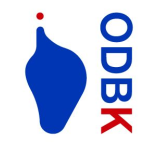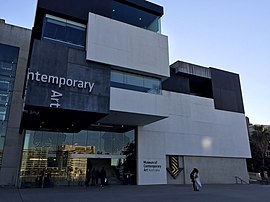By DHAdmann
In life everything is interconnected and things depend on each other to exist. This rule is also applied when we want to create something new, we need raw materials to transform them and create the new thing, so the new thing depends on others, in my endeavor to create EDI in the selection of the artists and artworks in museums and art collections. I want to create this aspect only by seeing the curatorial and decision-making processes of the art institution and art collection, but I realize that these aspects were in connection with other internal and those are in connection with other external and so on. So the question would be where to start?
Where to start to create a change of mentality? Maybe with society with art lovers and art collectors or maybe with politicians. The point is that we have to start in some place, not too far from where the decision-making is performed because we want that EDI bubble in the art institution in a decent period of time. This is something very interesting because not only is about reeducating the person by person in the Staff hierarchy, but to creating an independent structure and observer to continue watching and remembering the mission and commitment all in the art institution and their community want to achieve.
Let’s go through the brainstorm commitments made by the Museums to create DEAI in the last years. We can observe all the different aspects and possibilities a DEAI internal structure could take, and here I summarized in twelve points:
- Diversification of the Staff and Board Members
- DEIA / Anti-racism / anti-discrimination training / Stablish and enhance DEI Culture in all sectors of the art institutions. Culture of commitment from all sectors of the art institution
- An outside review, re-evaluation, and analysis of the art institution ( by experts and by the community / Diverse groups) and set-up procedures, practices, and actions in the next sectors:
- leadership,
- culture,
- Policies,
- Decision-making procedures
- Past and present practices
- Hiring procedures / Practices
- Work environment
- Integration and engagement “of” the community and communication with the community ( Diverse and inclusive groups ) come together, discuss relevant topics, and share resources. Authentically engage and collaborate with our communities in the development of exhibitions, education programs, and other initiatives.
- Create a DEI Strategic / Action plan
- Create a neutral (and anonymous for complaints) communication system/channel between the Board / Director / Employees / Facilitate conversations between the hierarchy levels. Pick up voices of ex-staff members. come together, discuss relevant topics, and share resources. Develop new organizational structure and procedures to review grievances and complaints
- Create a team/department focused on creating DEAI / Hire a leadership-level diversity executive
- Acquire and exhibit work from a more diverse range of artists / strengthen a program of exhibitions, events, and publications that address complex and unfamiliar narratives, and cross-cultural perspectives and foster a more diverse canon. Examine exhibition history over the past 25 years and acquisitions history over the past 10 years through the lens of racial equity and diversity
- Identify a list of artists, artworks, and movements to be prioritized for acquisition. Acquire work by Black, Latinx, and Indigenous artists, especially those of marginalized ethnicities, gender identities, and sexualities. Diversify the collections and their narratives
- Dedicate a percentage of the library and archives acquisition budget to publications featuring BIPOC artists, curators, and scholars
- Issue regular progress reports. Commit to an annual diversity audit to be conducted by the CDO
- Grow accessibility initiatives to include cognitive and psychological accessibility. Improve physical museum accessibility

